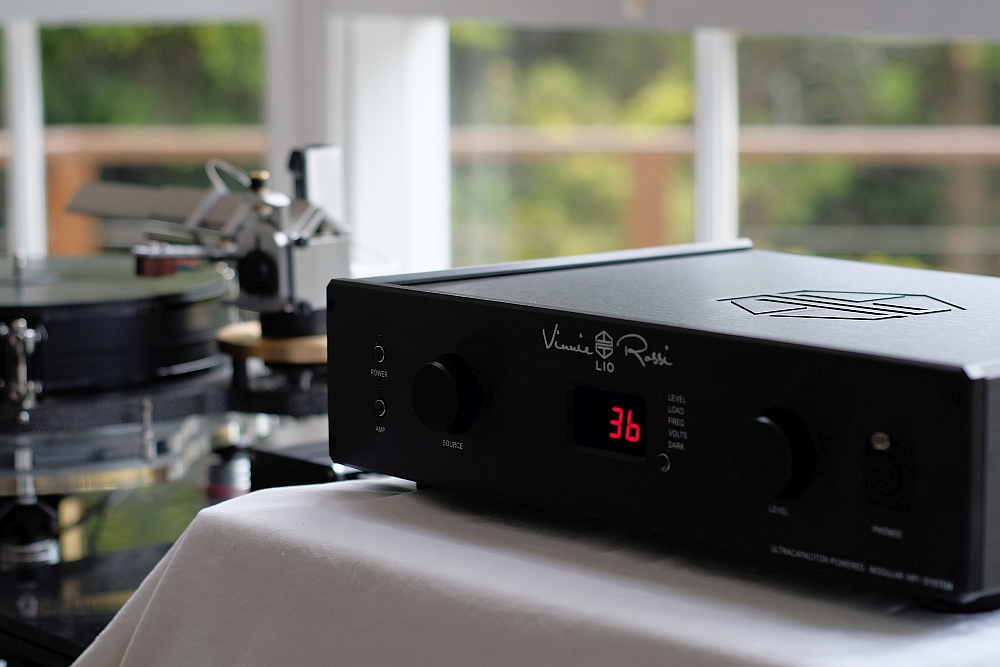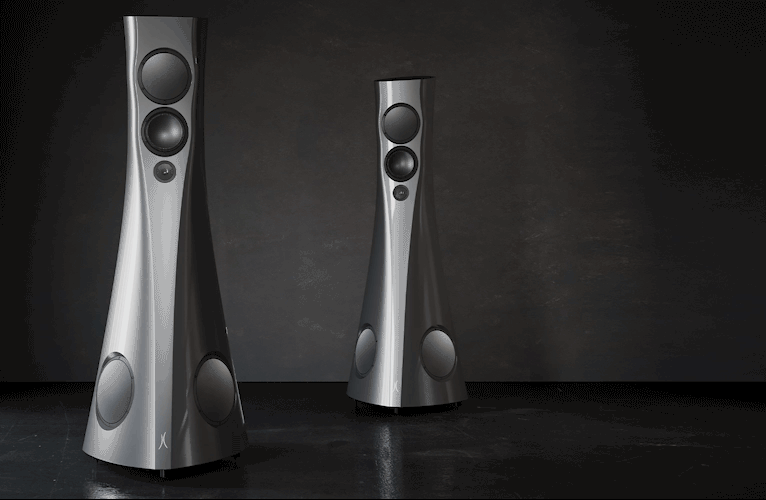As audio system complexity grows in relation to our rising demands for a wider choice of music listening alternatives, manufacturers have had to make product development decisions based on either product integration, additional stand-alone offerings or a mixture of both. As an example, you may have an integrated amplifier – itself, an amalgamation solution – which may present the option of a factory-fitted in-built phono stage or an independent unit which could be acquired when convenient when funds allow. Another method of providing multiple functionality, added features and diverse playback options is by way of modular design. This method requires particular design attention and presents its own engineering challenges but, when done right, a modular design can provide extended functionality, simplicity in terms of component count and, importantly, potential performance benefits by way of eliminating added componentry and interconnecting cables. Vinnie Rossi’s LIO integrated amplifier takes this extremely clever and challenging-to-implement concept to its full potential.
The LIO has been designed to accept an entire line-up of options available by way of small-format modules that simply slot-in (with zero soldering) across the rear panel. Up to five modules can fit across the available real estate with Vinnie Rossi engineering a whole swab of options to cater to most audiophiles’ system and music playing requirements. Also offered are a number of non-module-based factory internal add-ins such as a high quality headphone amplifying stage and more.
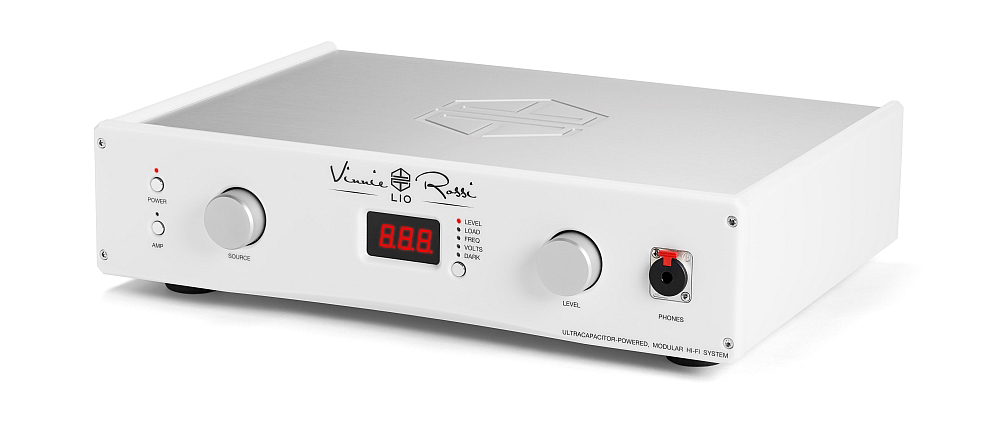
Plug ’n Play
So LIO is basically a platform – or shell – which requires plug-in modules to become a workable product. This allows the owner to customise LIO in a number of important areas. The bare platform ‘Base Unit’ requires the MOS-FET Class-A/B amplifier module if the owner’s desire is to drive a speaker system. Then a preamplifier stage with volume control, of course, needs to be added and here, there’s a couple of choices including a resistor-based (precision Vishay/Dale resistors) volume control with tube stage or an Autoformer-based volume with tube stage. From there, further options can be added as desired or when funds allow and these can include a choice of two DAC modules, a phono stage module, etc. as mentioned above. All modules are fitted without a drop of solder and simply slot into place – turn two large head screws by hand, slide the nicely-brushed damped top cover, plug the required module and screw said module’s front panel on to the LIO. Simple!
Our review unit arrived fitted with the maximum five module configuration. These included the DAC 2.0 and phono stage modules (twin RCA MC inputs) as far as source connectivity is concerned, while further plug-ins included three RCA-based line level input, twin RCA output (variable and fixed) and speaker binding posts (Cardas) output modules. Oh, and further options are available in terms of chassis/hardware colours. You may fancy a silver chassis with black top cover and control knobs or the converse colour scheme and combinations thereof. This is future-proof Lego for audiophiles.

The Base Unit’s fascia features a number of controls. There are two on/off buttons, for starters, one for the overall unit while the second one powers the MOS-FET amplifier module. Next on the left is a large ‘Source’ select knob, then a large central display flanked by a row of vertical buttons used to select the display’s information (numerical volume level, cartridge load, sampling frequency (USB input), capacitor bank volts and display off). Further along is the rotating volume control. A nice metal infrared remote is included and provides volume control, volume mute, input switching, DAC output phase, channel balance and more.
Also fitted to the review unit was the internal headphone amplifier bearing a 4-pin XLR style connector on the LIO’s front panel (a 6.5mm jack option is also available). It’s worth visiting the Vinnie Rossi website to investigate the numerous options on offer which, to name yet another couple, include the choice of a DHT preamplifier section, resistor- or transformer-based volume control with ‘TubeStage’ (matched pair of JJ E88CCs standard) offering wide tube compatibility for rolling, and more. Needless to say, this is a most versatile component that covers just about everything.
But that’s not all folks. Vinnie Rossi uses some clever engineering solutions to deal with a number of problems stemming from AC power issues. LIO uses a “patent-pending” technology which via an ultra-capacitor bank power supply – which the company terms “PURE DC-4-EVR” – is engineered to isolate the low-level audio circuitry from noise, voltage fluctuations and other AC mains power artefacts. Of course, this negates the need to use power conditioning/filter components – or even expensive AC cables, for that matter – many of which have been on a sliding scale upwards in terms of cost for some years now.
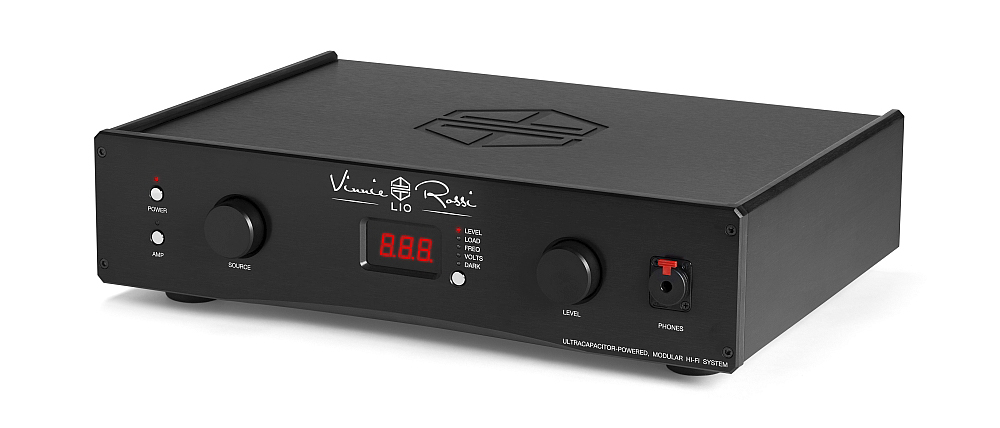
The PURE DC-4-EVR bank is actually made up of two arrays totalling 18 ultra-capacitors. Vinnie Rossi’s engineers, with undeniable intelligence, have configured one bank to charge while the other runs isolated DC current to the LIO’s circuitry. This configuration means that the charging bank is never tasked with running the circuit. Another of the capacitor-style power scheme’s benefits over a battery is the former’s charging cycles amounting to a quoted one million successions as opposed to the average battery’s two thousand cycles. This translates to many, many years (potentially into the decades) of cycling life as opposed to a battery’s two or so years’ life span. An ultra-capacitor bank can also provide very high instantaneous current which is an essential requirement for the adequate driving of demanding, low impedance speakers. And while the LIO is rated at 25 watts per channel into 8 ohms (45 watts into 4 ohms and 65 watts into 2 ohms) in practice, as I found, the subjective impression is of a more powerful device in tight control of your speaker system, serving as confirmation of the high current capabilities of LIO.
I asked Vinnie Rossi to expand on the technical aspects of this patent-pending technology:
LIO’s power supply uses two banks of ultra-capacitors (each storing approx. 39 Farads of charge, which is equal to 39,000,000uF). While one bank of ultra-capacitors is feeding clean DC current to all the audio circuits, the other bank is charging. Every approx. 5 to 10 minutes, the two banks seamlessly swap (and this process automatically repeats for as long as LIO is powered ON).
With this patent-pending approach, all of LIO’s audio circuitry is disconnected from the AC mains. This eliminates the need for power conditioners, high performance power cables, dedicated AC mains, etc., as noise on the AC mains does not disturb LIO’s audio circuits to begin with. The ultra-capacitor banks have very low output resistance (each ultra-capacitor’s internal resistance is less than 0.003 ohms), so they not only provide a clean source of DC power, but they also have very high output current. Unlike batteries, they have much higher cycle life (rated up to 1 million cycles), so they last a very long time and are maintenance free.
Each of the LIO modules (e.g. DAC, Phonostage, Tubestage, etc.) feature dedicated linear voltage regulation, as do the outputs from the dual ultra-capacitor banks. Therefore, all audio circuitry sees a stable and clean voltage source. In fact, there is no AC-to-DC conversion that takes place inside LIO. An external power adapter handles that task, so the power input to LIO is already DC. On top of this, all of the LIO control circuitry (front panel display, microprocessor control of relays used in the volume control, input select, etc.) is not powered from the ultra-capacitor bank in use as to not disturb the clean power to all audio circuits.
It’s a strong and clear message from Vinnie Rossi. The design philosophy behind LIO is one of maximising versatility, via the modular design, and of supplying all the circuits – be it inherent or by way of modules – with the cleanest AC possible while universally aiming to facilitate the maximum sonic performance. This last we’ll test anon…
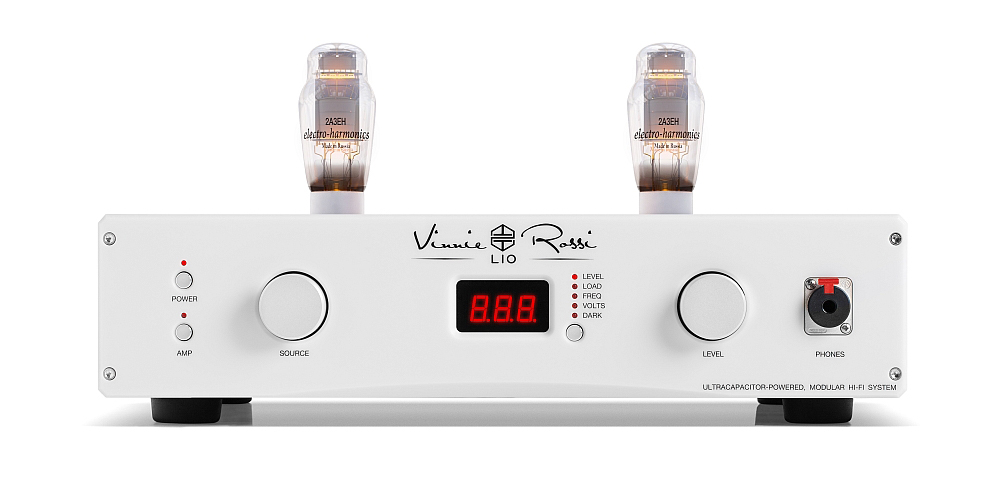
In Vinnie Veritas
My recently acquired – just before Christmas – Michell Engineering turntable and the fitted Trans-Fi linear tonearm are both in-waiting for a number of set-up refinements which are sound quality related. For those reasons, and so as to not take away performance potential, I chose not to test LIO’s phono stage. I’m told that it is indeed very good and a very worthwhile add-on to the LIO architecture. The LIO’s phono stage – an indeed, any of the available modules – could be quite easily auditioned within the context of your own system and listening environment courtesy of your preferred, and hopefully helpful, retailer. There’s very little risk or hassle there. (Please note Vinnie Rossi products have alternative distribution/retailing models in different countries).
So LIO’s auditioning throughout the review period was by way of feeding its DAC 2.0 module with an S/PDIF signal from my transport, a USB signal from my MacBook and via my own Totaldac d-1 core DAC’s analogue outputs into the LIO’s preamplifier stage through one of its RCA inputs. The DAC 2.0 module is a near AU$5000 option (also available is a simplified DAC 1.0 at AU$1342) so is a chunky add-on price-wise. The module features the aforementioned asynchronous galvanically-isolated USB, BNC S/PDIF and TosLink optical inputs. The flagship Asahi Kasei Microdevices’ ‘Velvet Sound’ AKM AK4497EQ 32-bit chip is used, one per channel in a dual-mono configuration and a Class-A J-FET output stage. An FPGA buffer and femto-reclocking scheme control jitter to lowest levels. Sampling rates available are up to 32-bit up to 768kHz and DAC 2.0 module is capable of up to DSD512 playback.
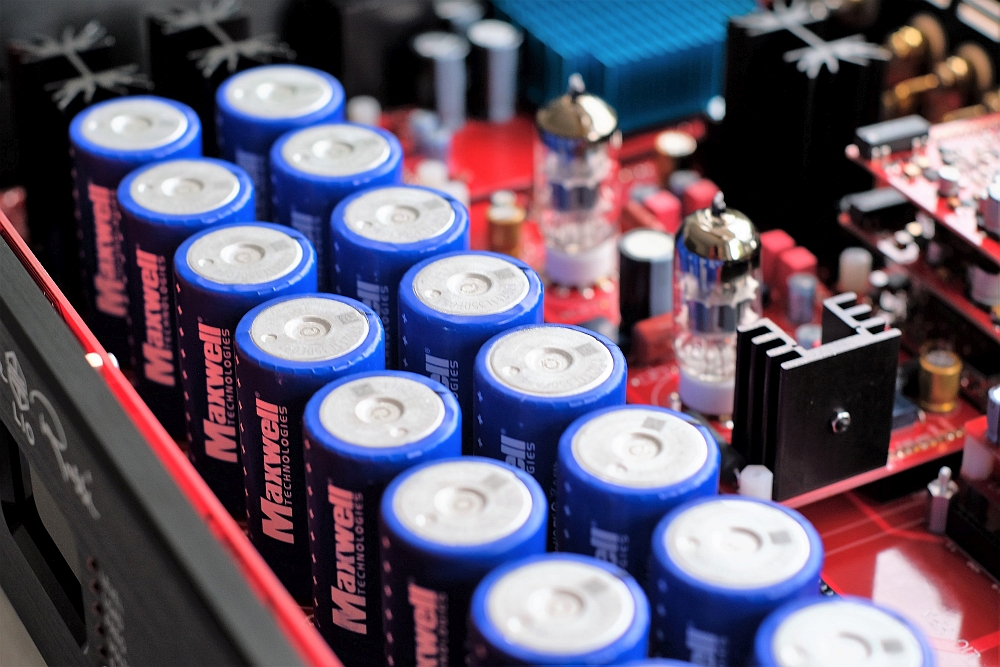
The fitted MOS-FET amplification module drove my new Wilson Alexia Series 2 (see my review of the Alexia here). Cables used were TARA Labs The Muse and ZenSati’s sILENzIO, both in for review, and also a loom of the excellent in-house Vermouth Audio Black Pearl.
If left unpowered at the mains, upon turn-on, LIO goes through a ‘charging’ process for about 15 minutes (a counter displays escalating numbers pertaining to the banks’ charge status) then the unit actually powers itself off again. Re-firing LIO sees a short 30 second or so warm-up period before it’s ready to rock. The long ‘Pre-charge’ sequence only kicks-in if LIO is disconnected from the mains so, under most circumstances, your wait will be around 30 seconds before music kick-off.
I know the sound of the Totaldac intimately so that was the first port-of-call for the LIO’s auditioning stages. What greeted me at first listen was a controlled yet full-bodied, harmonically textured and tonally beautiful presentation with a touch of warmth in the right places (the all-important upper-mids).
A recording I often use to determine high frequency detail and decay and female vocal purity is Karen Carpenter’s beautifully delicate “The Rainbow Connection” from Clarity Cable’s sampler (as far as I know, not a formal release but a VIP give-away at CES some years ago). The track starts with a 10 second intro featuring crisply-recorded bells which LIO recreated in a multi-dimensional and highly detailed sonic wave that stretched the tonal cues and harmonic decay in a realistically natural way. Then, when the electric bass line kicks-in, it’s a bouncy, tight and rhythmic propulsion that segues to that most beautiful of voices. In some system configurations Karen Carpenter’s very present and close-miked vocals can sound somewhat sibilant. Not here. LIO is capable of one of the most natural, sweetest mids and highs of any component auditioned within, and reasonably above, this price bracket.
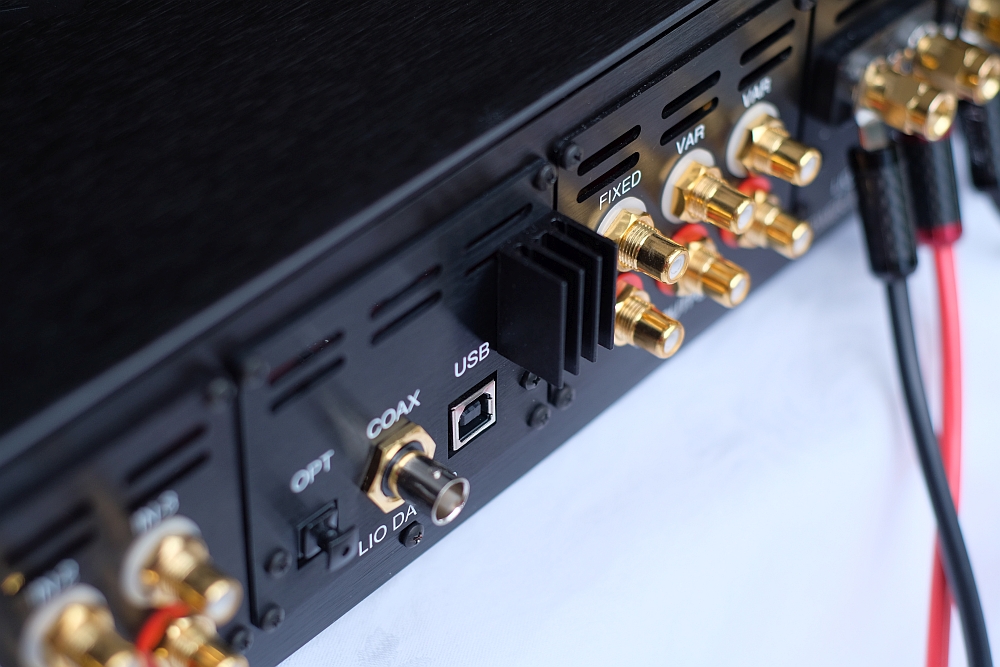
From the same excellent Clarity Cable sampler, I spun the main theme from the Lawrence of Arabia soundtrack where the orchestral composition opens – and is accented throughout – with a massive percussion roll. While the LIO reproduced the attack, punch, detail and general tonality of the drums to provide very satisfying impact, the absolute bottom octave was somewhat reduced in scale. Mind you, this was only noticed in the context of my reference Gryphon Antileon EVO, a massive Class-A power amplifier with seven times the LIO’s rated power and perched at four times the LIO’s price point.
I experienced high doses of naturalness while spinning Ryan Adams’ Live at Carnegie Hall. Adams’ vocals are extremely close-miked – in the typical way modern artists ‘mouth’ their stage microphones when performing – and many systems show this up with sharp sibilance. LIO controlled the sharpness while enriching the presentation and retaining all the dynamic undulation of Adams’ vocal technique. His guitar, even when aggressively strummed, sounded full-bodied, rich in wood-resonance while never being overblown or overdone. Again, the main attribute is an open, natural, musical presentation. This is a device that swings, ever-so-marginally and expertly well-balanced, on to the warmer, fuller, tonal-rich end of the spectrum, far away from cold analysis… always super involving.
Feeding the DAC 2.0 module via its BNC S/PDIF input (and also briefly via USB from my MacBook) retained all the superbly musical properties referenced above. Direct A/B’ing may reveal the more expensive Totaldac to possess a larger soundfield and perhaps a marginal advantage in timbrel accuracy but the DAC 2.0 module performed exceptionally well in all areas and comparably so against classy standalone DACs. So, impressions were of a very well-implemented integrated DAC solution able to compete with many high-priced component pieces.
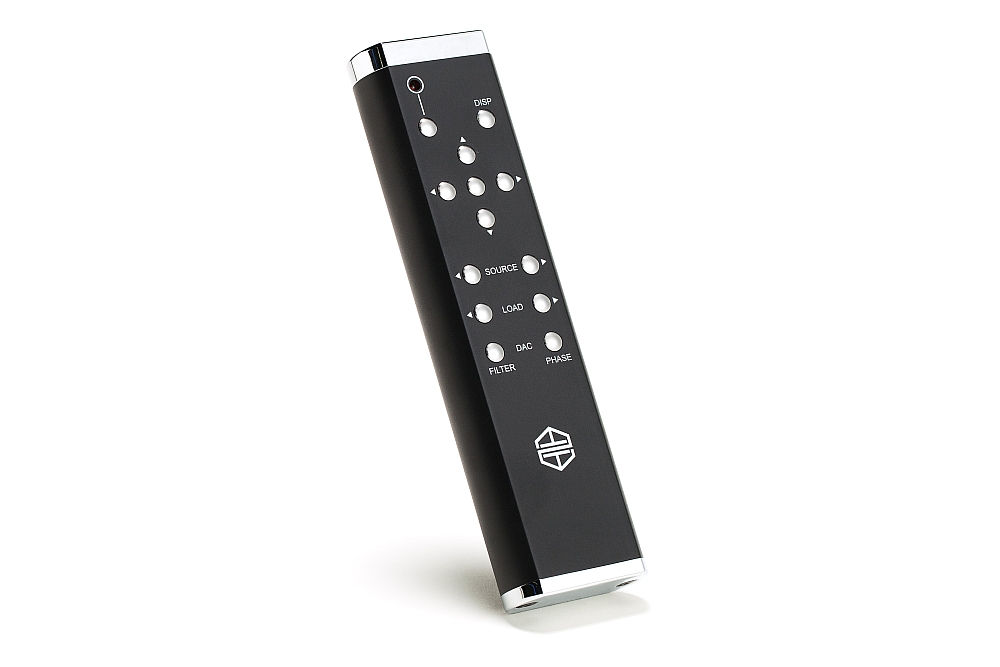
While LIO’s rendering of key aspects such as tonality, harmonic decay, dynamics, bass control, etc., was class-leading, the unit also performed above par when it came to spatial information. Imaging was precise with well-focused instruments and vocalists, all within a large soundfield. Live recordings – such as the already mentioned Ryan Adams or the superb Harry Belafonte Live at Carnegie Hall (the Gold Note edition) – presented accurate impressions of hall ambience and audience presence.
An aspect where the massive ultra-capacitor bank shows its mettle is in transient attack. Put on a well-produced acoustic guitar release, such as Duet from Luc and Lagrène, and LIO will reward you with sharp transients and unconstrained attack while managing to flesh out the notes with accuracy and, subsequently, with a true waning of harmonics. Ditto for rock recordings with good capturing of kick drums – LIO hits you with solid, tight punch. Or with Curandero’s brilliant Aras, where the tabla and larger percussion instruments hit hard, were sharply defined in terms of transient attack at the leading edge of strikes while, again, stretching decays within airy ambience.
Conclusion
The Vinnie Rossi LIO modular component is quite the breath of fresh air in an industry where me-too products abound. It is versatility and flexibility embodied. It allows a range of configurations that can be obtained at the time suitable to the owner. It in its most basic form, it will provide musical satisfaction even when slotting into existing system contexts while, once you account for the multiple combinations of modules and upgrades, it will bloom into a multi-tasking audio powerhouse.
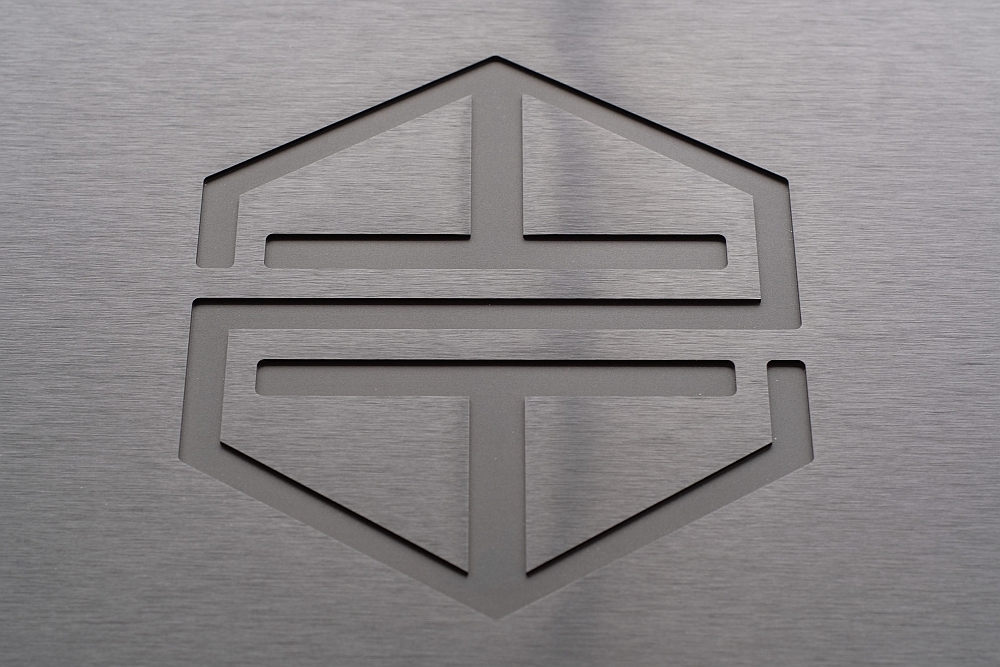
It’s not just about functionality maximisation, however. LIO is an exceptional performer through all the configurations tested. It’s natural, smooth yet resolving, capable of great transient attack, pleasingly – and only marginally – mellow-sounding through the midrange and highs while being a strong walloper with its tight and fast bass. Its tonal accuracy and harmonic decay is exemplary too.
Go! Go and seek out an audition! You’ll be foolish to discount this most unassuming component which, behind its well-built yet functional and matter-of-fact design, hides a multitude of opportunities and sonic discoveries for the judicious music lover. And after all, as audiophiles, music and adventure should be of primary importance for us all…
… Edgar Kramer
This email address is being protected from spambots. You need JavaScript enabled to view it.
Associated Equipment
- Speakers — Wilson Audio Alexia Series 2, Axis Loudspeakers VoiceBox S (nearfield monitor)
- Amplifier — Gryphon Audio Antileon EVO
- Preamplifier — Supratek DHT Reference, Lightspeed Attenuator LDR passive
- Sources — Digital: Yamaha CD-S2100 used as transport, Totaldac d1-core DAC, MacBook with BitPerfect software, AIFF files. Analogue: Michell Engineering Orbe with Gert Pedersen Level 3 modifications and Origin Live Ultra upgraded motor, Trans-Fi Terminator air bearing linear-tracking arm, Grado Reference cartridge, REDGUM Audio RGPH2 phono stage
- Processor — DEQX PreMate
- Cables — sILENzIO loom, Vermouth Audio Black Pearl Mk.II loom
- Audio Rack — SGR Audio Signature
Vinnie Rossi LIO Integrated Amplifier
Price: Base Unit AU$4495, as tested AU$16,355 (Test Unit Modules: MOS-FET amplifier AU$1345, LIO RCA Analogue Inputs AU$445, RVC + Tube Stage AU$1785, DAC 2.0 AU$4945, Phono stage AU$2250, Headphone amp AU$1090)
Australian Distributor: Audio Magic
+61 3 9489 51 22
www.audiomagic.com.au
NOTE: We’re told Audio Magic’s appointment as Australian distributor is the first of its kind, with the rest of the world having distributor/dealer models and manufacturer direct in the USA. Audio Magic will be seeking to appoint dealers around Australia.
Vinnie Rossi
Suite 125, 800 Main Street
Holden, MA 01520
United States of America
+1 (774) 234 0800
www.vinnierossi.com






